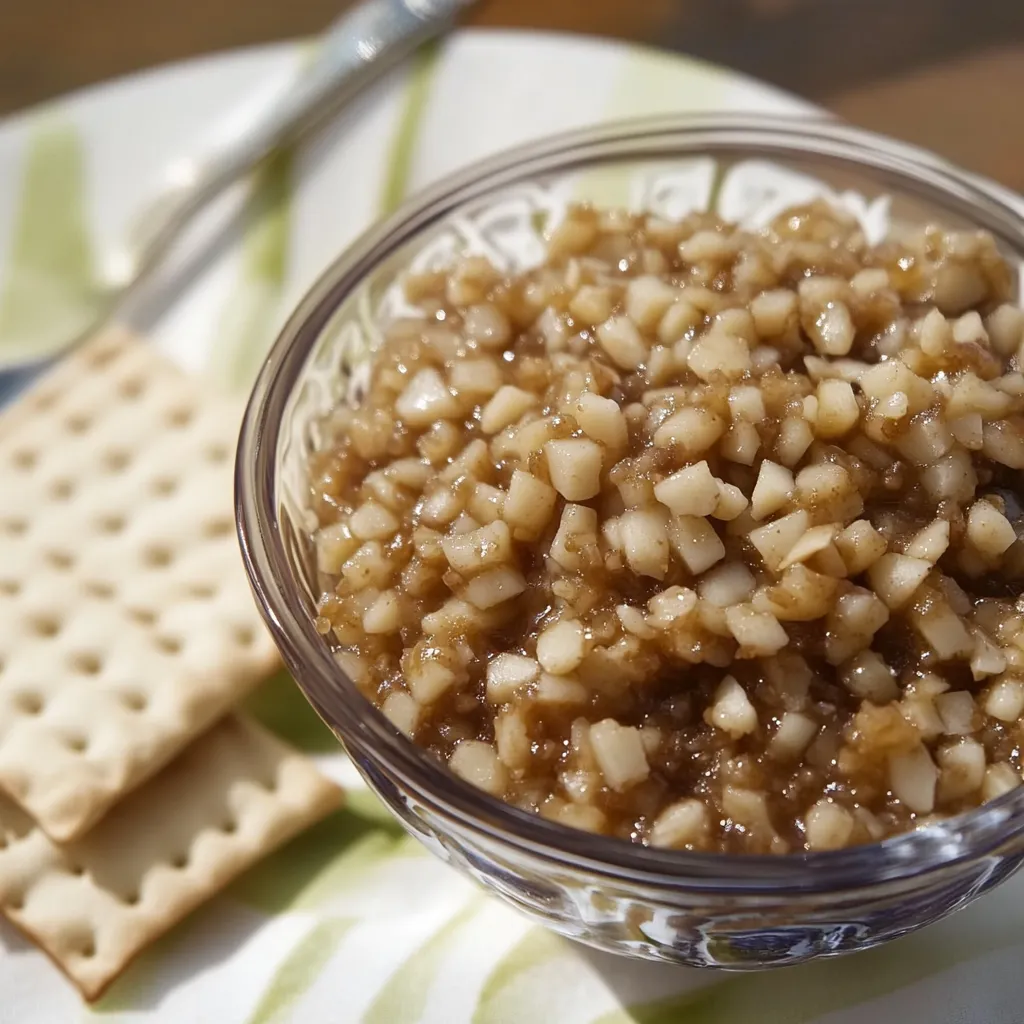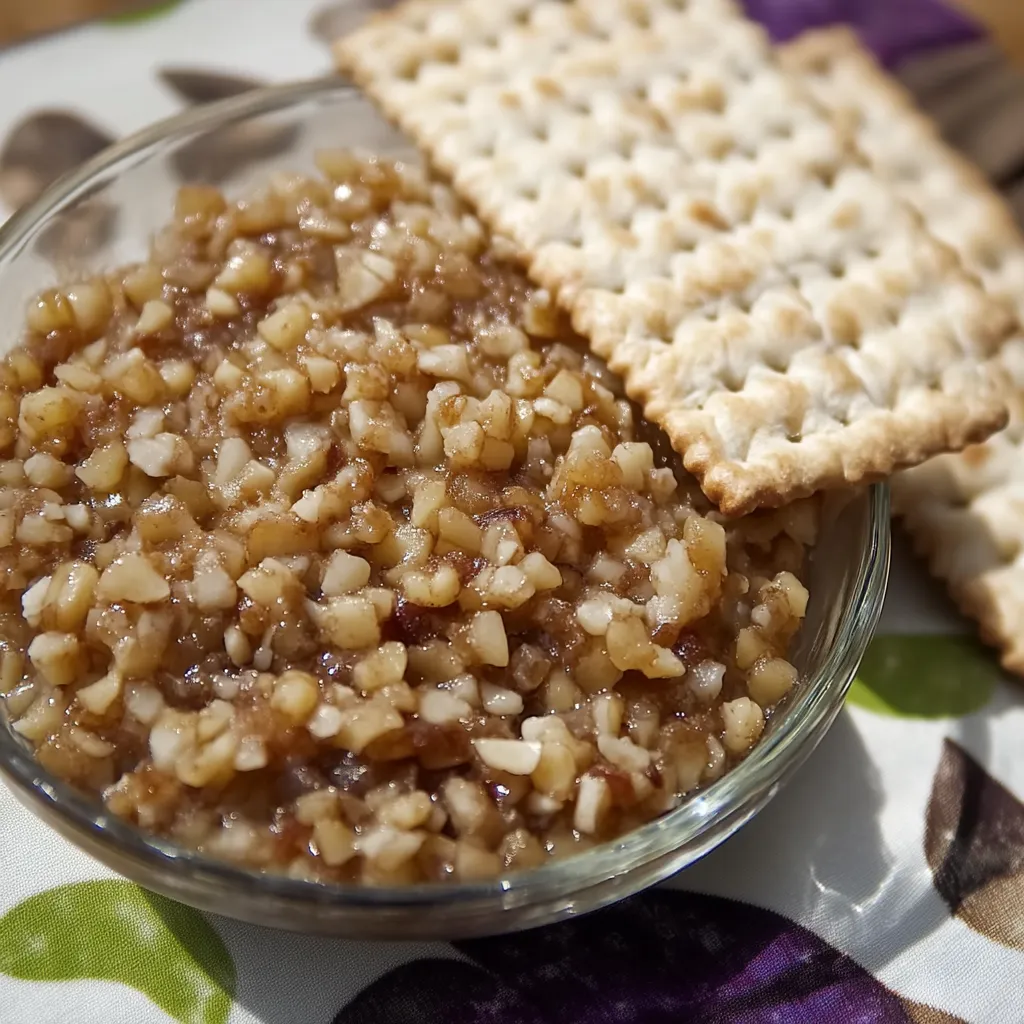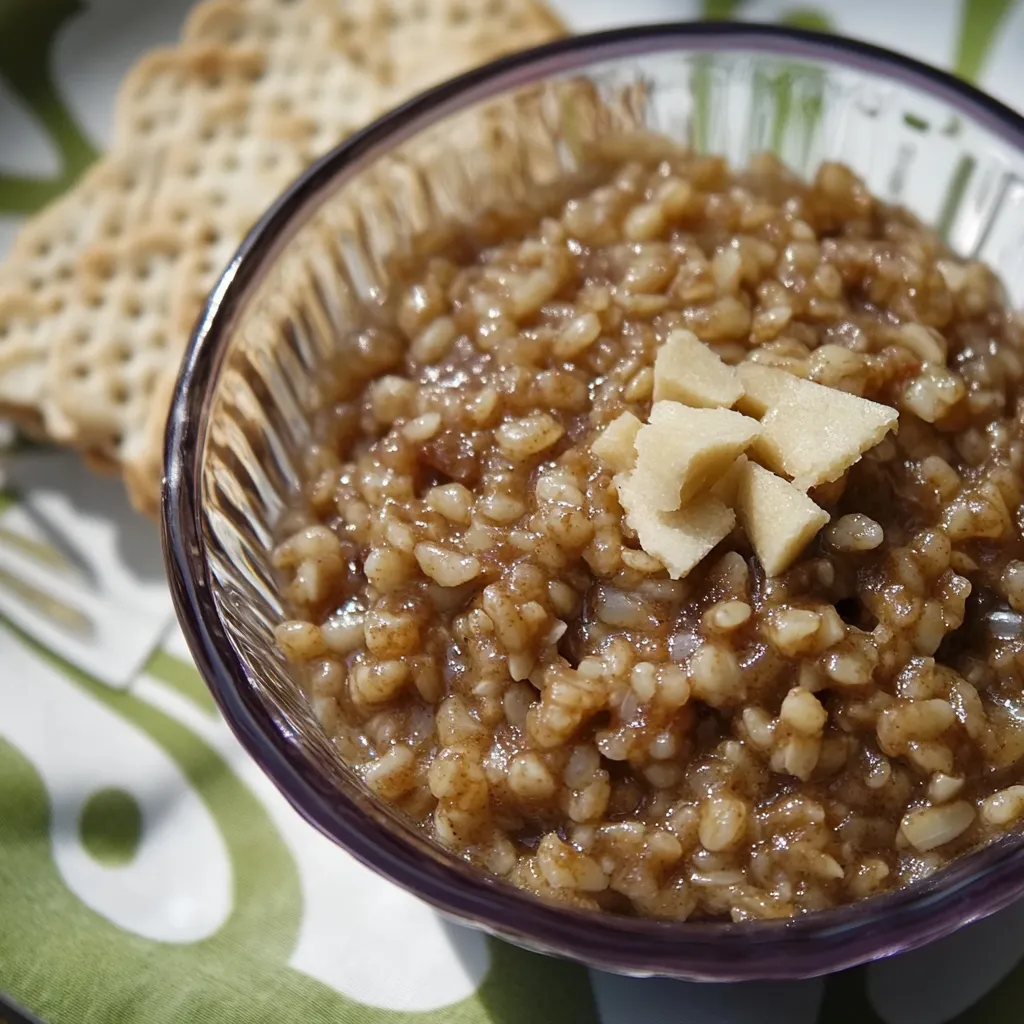 Pin it
Pin it
This traditional Passover charoset brings the perfect blend of sweet apples, crunchy walnuts, and aromatic spices to your Seder table. Its rich symbolic meaning combined with irresistible flavor makes it a highlight of the holiday meal that everyone looks forward to.
I've been making this charoset recipe for over fifteen years. What started as an attempt to recreate my grandmother's version has become our family's official Passover tradition, with my children insisting it tastes exactly like freedom should.
Ingredients
- Granny Smith apple: Adds tartness and firm texture that balances the sweetness
- Gala apples: Provide natural sweetness and softer texture for perfect balance
- Chopped walnuts: Bring essential crunch and earthy flavor traditional to Ashkenazi charoset
- Raw honey: Offers rich natural sweetness with depth not found in processed sweeteners
- Cinnamon: Provides the signature warmth that defines charoset's aromatic profile
- Sweet Kosher red wine: Symbolizes the sweetness of freedom and imparts beautiful color
- Nutmeg: Adds subtle complexity and warmth to the spice blend
- Clove: Introduces a gentle aromatic note that enhances the other spices
- Brown sugar: Allows for customizing the final sweetness level to your family's preference
Step-by-Step Instructions
- Prepare the Apples:
- Thoroughly peel all apples, removing all skin. Dice them into very small pieces, approximately ¼-inch cubes. For a creamier texture, consider briefly pulsing about ⅓ of the diced apples in a food processor. This creates varied texture that helps the charoset cling better to matzah.
- Combine Ingredients:
- Place all diced apples in a large mixing bowl. Add the chopped walnuts, raw honey, cinnamon, wine, and dashes of nutmeg and clove. Using a wooden spoon, gently fold everything together until evenly distributed, being careful not to mash the apple pieces too much.
- Adjust Sweetness:
- Taste the mixture and evaluate the sweetness level. Add brown sugar gradually, starting with one tablespoon, mixing thoroughly and tasting after each addition until reaching your desired sweetness. Remember that flavors will meld and intensify during refrigeration.
- Rest and Serve:
- Cover the bowl with plastic wrap and refrigerate for at least one hour, though overnight is even better as it allows the flavors to fully develop and meld together. The charoset will darken slightly as the apples absorb the wine and spices, signaling it's ready to serve.
 Pin it
Pin it
The wine selection truly matters in this recipe. I discovered that using Manischewitz Blackberry wine adds a particularly rich, fruity quality that elevates the entire dish. One year when we ran out, I substituted grape juice, and my entire family noticed the difference immediately.
The Symbolic Meaning
Charoset holds deep significance at the Passover Seder table. Its chunky, muddy appearance represents the mortar used by Hebrew slaves in Egypt. Each ingredient carries meaning. The sweetness symbolizes hope amidst hardship, while the wine represents joy and freedom. When placed on bitter herbs during the Seder, it teaches that even in difficult times, sweetness can be found.
Storage and Shelf Life
Properly stored charoset will keep well in the refrigerator for up to five days. Store it in an airtight container to preserve freshness. The flavors actually continue developing over the first 24-48 hours, with many families preferring second-day charoset. If the mixture seems to dry out slightly, you can revive it with a small splash of additional wine before serving again.
Variations Across Traditions
While this recipe follows Ashkenazi Jewish tradition, Sephardic charoset differs significantly. Mediterranean and Middle Eastern Jewish communities make versions with dates, figs, and pistachios instead of apples and walnuts. Some Moroccan varieties include dried fruits and sweet wine reduced into a paste-like consistency. Persian versions might incorporate pomegranate or banana. Each regional variation reflects local ingredients while maintaining the symbolic connection to mortar.
 Pin it
Pin it
Whether you're new to making charoset or revisiting a family tradition, this recipe is sure to add meaning and sweetness to your Passover Seder table.
Frequently Asked Questions
- → Can I make charoset ahead of time?
- Yes, charoset can be made 1-2 days ahead of your Seder. The flavors actually develop nicely as it sits in the refrigerator. Just store it in an airtight container and give it a good stir before serving.
- → What can I substitute for Kosher wine?
- If you don't have Kosher wine, you can substitute grape juice, pomegranate juice, or even a few tablespoons of balsamic vinegar mixed with a touch of honey. Each will provide a different flavor profile but maintain the symbolic element of the charoset.
- → How long does charoset stay fresh?
- Charoset will stay fresh in the refrigerator for 3-5 days. The apples may begin to brown slightly over time, but this won't affect the taste. If the mixture seems dry after storage, you can add a splash more wine or honey before serving.
- → Is charoset suitable for people with dietary restrictions?
- This charoset is naturally gluten-free and dairy-free, making it suitable for many dietary needs. To make it vegan, simply substitute the honey with maple syrup or date syrup. For nut allergies, you can omit the walnuts or substitute with sunflower seeds.
- → Why blend some of the apples for this charoset?
- Blending a portion of the apples creates a creamier texture that helps bind the charoset together. This technique creates a nice balance between chunky and smooth, allowing the charoset to stay on matzah without falling off, while still maintaining some textural interest.
- → What makes charoset significant at Passover?
- Charoset symbolizes the mortar the Israelites used when they were enslaved in Egypt. Its sweet taste represents the sweetness of freedom after the bitterness of slavery. The texture and appearance are reminiscent of clay or mortar, connecting participants to the Passover story.
